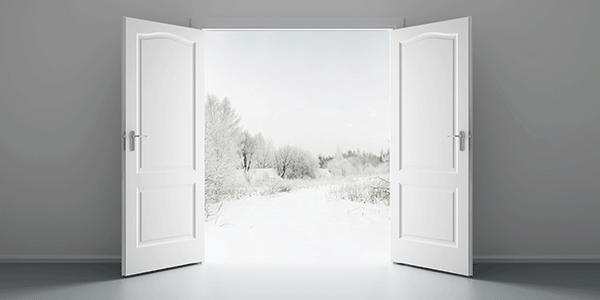Five Steps to Improve Winter Floor Care
by Tornado Industries, Inc.
In many parts of the country, the winter months present special floor-care challenges. Snow and the products used to keep it off pavement tracked into and around buildings, and the increased moisture creates mud that can be carried on the soles of shoes.
A proper winter-floor care program requires a lot of time and attention, making it labor intensive (and expensive). Skimping in this area, however, can lead to even costlier floor damage and slip-and-fall accidents.
To keep floors looking and performing their best in the coming months, follow these five steps.
1. Use High-Performance Matting.
During the winter months, it’s important to replace exterior wiper mats or doormats with scraper mats, which aggressively scrape soil and debris from the bottoms of shoes. Immediately inside the door, place a wiper/scraper or bi-level mat, which further wipe and dry the shoes. The basic wiper mat, which absorbs remaining moisture, is the last piece of the puzzle.
This three-piece system should remove all snow, ice, mud, ice melt, etc., from footwear so the person can safely transition from mats to hard-surface floor without slipping. It also serves to capture contaminants to protect carpeting.
2. Keep Mats Clean.
Even with matting, debris sometimes makes it way beyond the building’s entrance. Why? Often it’s because cleaning crews have neglected the matting. Even facilities that lack space for the full 15 feet of matting can have effective winter floor-care programs if they simply keep the mats they do have clean.
Routine cleaning and replacement of mats should be part of any daily winter cleaning program.
Vacuum mats regularly to avoid debris buildup and use an ice melt remover to remove white powdery marks. Once mats are saturated, they are ineffective. Make sure custodial crews have enough dry mats in stock to replace wet ones throughout the day.
3. Clear Outdoor Debris.
One of the best defenses against debris making its way into and around a building is to remove the source. Sweeping the pavement in front of the building should be added to a janitorial department’s daily winter tasks.
There’s no reason to have piles of ice melt or salt in front of a building for days after a big snowfall.
Getting rid of this debris keeps it from entering the building and damaging the floor finish. To avoid ruining surrounding landscape, use a battery-powered or manual push sweeper to completely remove the debris.
4. Clean Hard-Surface Floors.
It’s particularly important to keep hard-surface floors clean and dry during the winter months. Ice melt can eat away at floor finishes, and moisture from snow and ice can lead to dangerous (and costly) slip-and-fall accidents.
Prevent salt buildup and damage to hard-surface floors, especially those near the entrances, clean by mopping frequently with a neutral floor cleaner. In areas of heavy foot traffic, this step may need to happen every one to two hours during snowy times. Use high-velocity air movers to keep the floors dry during cleaning. Even better, use an autoscrubber that cleans, scrubs, and dries in one pass.
5. Burnish, Don’t Refinish
Despite your best efforts, snow and ice melt will likely wreak havoc on the floor finish. It may be tempting to strip and refinish the worn floors, but cold weather can negatively affect the finish and the winter elements may re-damage your efforts.
Until the weather improves, up the frequency of routine cleaning, and burnish as needed to restore shine. Be sure the floors are completely clean before burnishing, however, to avoid working debris into the finish.
Make Things a Little Easier
Download Tornado’s Winter Floor Care Checklist for the whole team!
[mc4wp_form]


